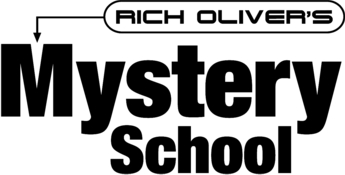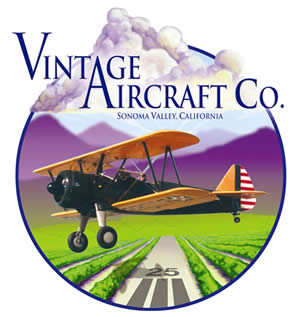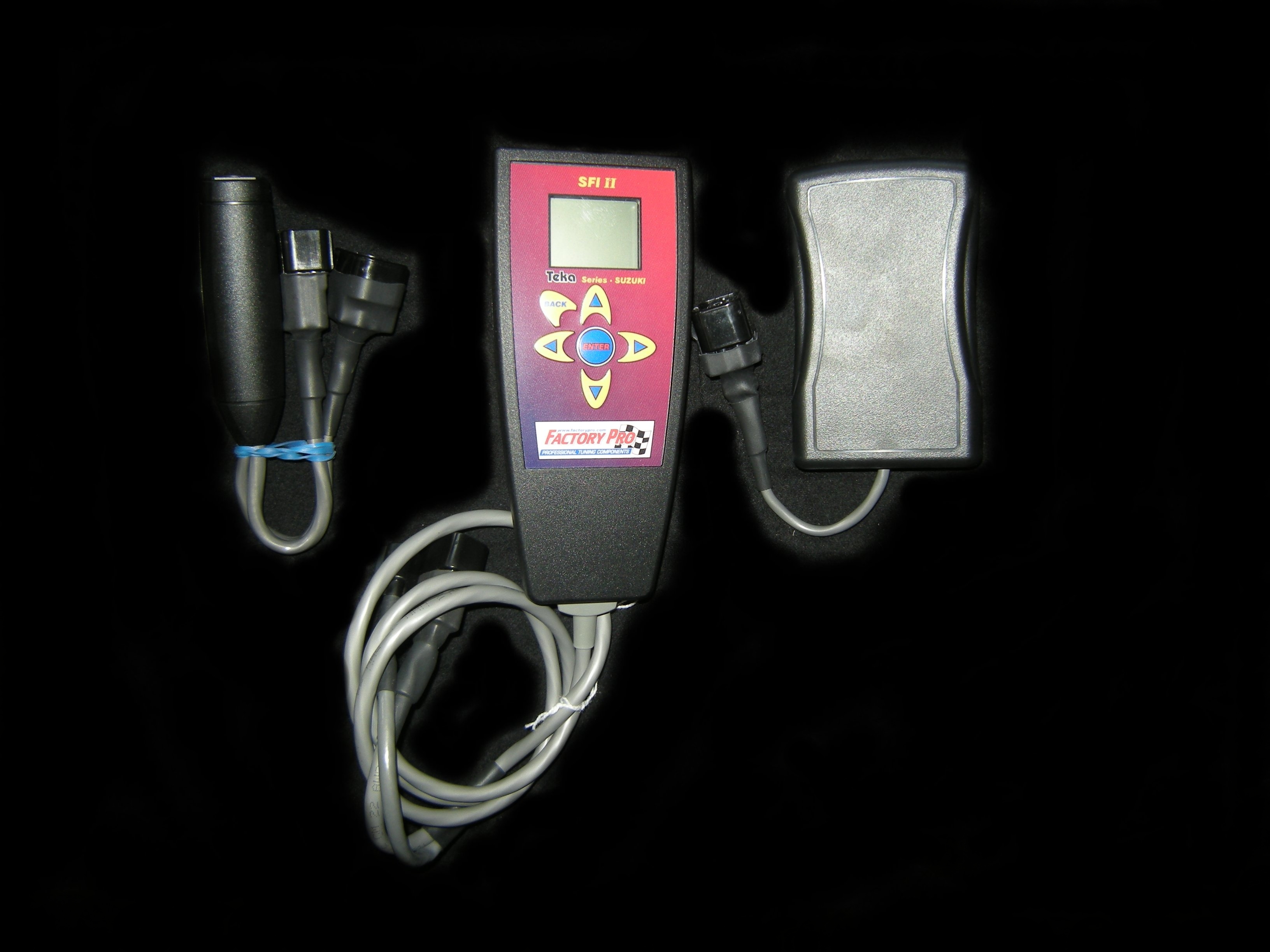Set up EC997 Dyne System for Break-in (like Sorensen, Turner,
Di Salvo, AMA guys did it)
- On GRAPH SCREEN:
- As always, pick your REFERENCE FILE. (Let's
use a tz250). Click once on it so it's highlighted with white
x's and connected with white dotted lines. (That tells the program
that you are using this file's setup parameters and data)
- Click on GO TO TEST (rh mouse click menu)
- On TEST SCREEN:
- Uncheck Auto-increment.
Uncheck Auto Decel.
Uncheck Warm-up.
- Set Tach Ratio (main menu, at top menu bar,
under "Setup" or "Tools".
Manually enter 8000 rpm (that's the "just below where the powerband
starts on a tz250" point)
- As normally, follow Tach Ratio Setting
procedure by typing in the achieved rpm and APPLY.
- When you are satisfied that the tach
ratio is set, click "OK".
- Decide on an Target Break-in RPM.
- Pick an RPM that is just below the powerband,
(so we don't create too much heat and glaze the cylinder
walls before the rings break in).
We will use 8000 rpm for a tz, rs Honda or rs Aprilia 250
- because they start pulling at about 9000 rpm.
- Go to the upper RH corner of the TEST SCREEN
and double click on 8000 rpm to select that as the RPM TARGET
on the green, horizontal STATUS BAR.
- Now - every time you get to 8000 rpm,
the dyno will prevent the engine from exceeding 8000 rpm.
So - there will be no dyno loading below 8000 rpm till the engine
gets to 8000, where, if you roll the throttle on fully, it will
make "some, but not a lot" of heat. (making relatively little
combustion chamber heat... no wall glazing and preventing ring
scuffing).
- Install 4 gas EGA probe into an exhaust pipe
- I always do the pipe closest to me first
and label notes as RH or HL pipe and let the owner figure out
which cylinder it is.
- Operator METHOD
- Top gear (as always), EGA probe installed
(to catch dangerous jetting - anything less than 5% on a tz
250).
- Roll on throttle easily, till it gets to
8000 rpm then roll the throttle on, 100%.
Hold for 3 to 5 seconds, then, let off throttle and let the
engine decel.
- Wait for 10 to 15 seconds at 2000 to 3000,
then, repeat.
- Once you are confident that the jetting's
not too lean and everything sounds OK, then, get the rider and
show him how to do it - and make him spend the next 20 minutes
rolling the throttle open, count to 5, then let off, count to
15 and roll it on again.
- The rider will definitely tell you when 20
minutes is up.
- Stop the engine, check nuts and bolts and springs
and you can now do a real Power Test. Reset the Tach Ratio at 10,000
rpm to allow for realistic "on the powerband" Tach Ratio. Reset
your "AUTO INCREMENT, AUTO DECEL, and WARMUP". Do Warmup, then,
8000 to 12,500 on the tz on RH exhaust and then, switch EGA to the
LH exhaust and repeat. There will be a bit of hp difference in RH
and LH pipe.
A good "crosscheck" - If the second test power is greater, it's
likely that the jetting is a bit lean (use the EGA to figure which
cylinder / cylinders they might be).
Factory pro Dyno Centers know what CO% numbers work well on their
EC997 Dyne Systems.
After 20 minutes, the rings will be gently broken
in - without ring scuffing from oil breakdown from high heat in the
"marginal ring seal locations" when it's on the powerband
Works for the topend of 4 stroke engines, too.
Why Break-in?
Neither the rings nor the cylinder walls are perfectly round when installed,
clamped down and warmed up to operating temp.
What makes it even worse, is that they are heated by the exhaust on
one side and cooled by the intake charge on the other and it's simply
not possible to recreate the localized heated and cooled areas before
blueprinting and assembly (though it's certainly a goal!).
Engine building
Ideally, on a "strange" engine, you'd set "some" cylinder clearance
and run the Break-in procedure - then disassemble the topend and look
for piston tight spots.
Once you "know" an engine, you'll know what clearance to run pistons
at and that the "factory suggested" aren't necessarily the best.
On the old gsxr750, 88-89, the pistons had a .75"
round "tight spot" only on the intake side of the piston. We used to
whetstone off about .0003 to .0005" (that's 3 to 5 tenths of 1 thousandth
of an inch) there. If memory serves correctly, we gained a couple hundred
rpm on top and about a horsepower.
At 12,000 rpm, a little bit of drag adds up!
Drag adds up.
We had an oil additive that would decrease the drag in a tz transmission.
It was worth .5 to .75 true, loaded hp on an rs or tz.
It used to be called "Concentrate 8" but I'm not sure what they
call it now.
(Update "Concentrate 8": Dec 2007 - we are looking into getting another
production run and perhaps even improve the 2% to 3% power gain the
old "Concentrate 8" delivered on the 4 cycle engines)
You can tell when friction is reduced, as power goes up and gearbox
running temp goes down (always look for multiple power indicators).
On an 01 gsxr 750, that additive was worth 2.5% to 3% power increase
and crankcase temp. dropped almost 20f under continuously identical
running.
We were doing multiple, consecutive tuning tests and were getting .1%
to .2% repeatability, test to test and then added the additive.
After the addition of a couple ounces of fluid, the next test sequence
showed 1% improvement over the REFERENCE FILE, the next test sequence,
2%, the next test 3% and the 4th and 5th test, 3.5% total, again, as
referenced to the original REFERENCE FILE.
Crosscheck?
The gsxr750 crankcase temp, over the transmission, which was ~180f during
all of our previous testing, dropped to 160f, all the while, maintaining
the same time interval during our consecutive tests. Almost 20f cooler.
The next morning? Still a solid 3%+ over the original
REFERENCE FILE. (whew! It's GOOD when things repeat! :-)
Marc Salvisberg
Factory Pro Tuning
December 21, 2006
Comments?
|





